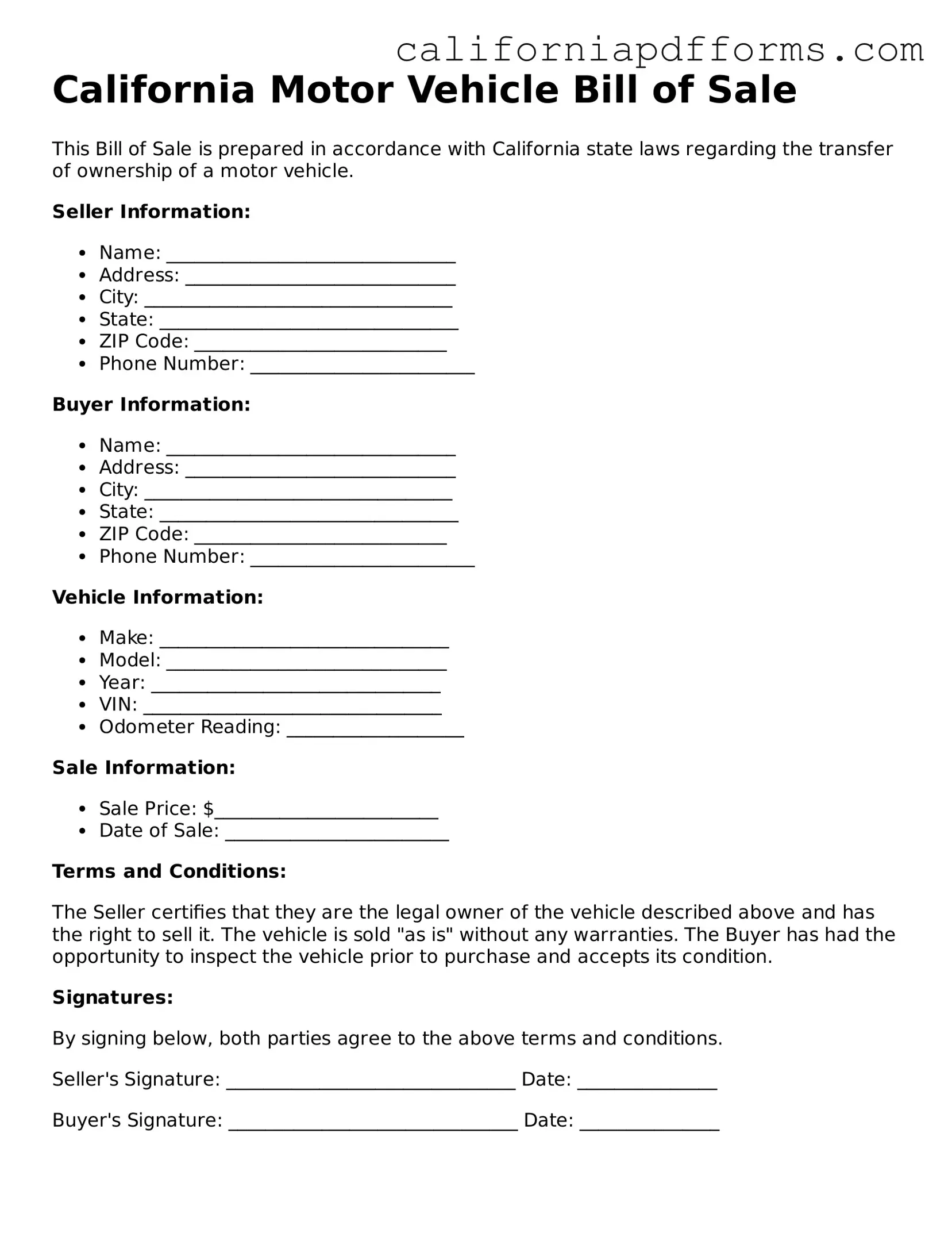What is a California Motor Vehicle Bill of Sale?
A California Motor Vehicle Bill of Sale is a legal document that records the sale of a vehicle between a buyer and a seller. It provides proof of the transaction and includes important details about the vehicle and the parties involved.
Why is a Bill of Sale important?
The Bill of Sale serves several purposes:
-
It provides a record of the transaction for both the buyer and seller.
-
It can help establish ownership and protect against future claims.
-
It may be required for registration and titling of the vehicle.
A typical California Motor Vehicle Bill of Sale includes:
-
The names and addresses of both the buyer and seller.
-
The vehicle's make, model, year, and VIN (Vehicle Identification Number).
-
The sale price of the vehicle.
-
The date of the sale.
-
Signatures of both parties.
Do I need to have the Bill of Sale notarized?
Notarization is not required for a Bill of Sale in California. However, having it notarized can add an extra layer of security and authenticity to the document.
Can I use a Bill of Sale for a vehicle purchased from a dealership?
Yes, a Bill of Sale can be used for vehicles purchased from dealerships. However, dealerships often provide their own sales contracts, which may serve the same purpose.
California does not mandate a specific format for the Bill of Sale. However, it must include all relevant information about the transaction and the vehicle. Using a template can help ensure that all necessary details are included.
What should I do after completing the Bill of Sale?
After completing the Bill of Sale, both the buyer and seller should keep a copy for their records. The buyer will need to present the Bill of Sale to the Department of Motor Vehicles (DMV) when registering the vehicle.
Can I cancel a Bill of Sale?
Once a Bill of Sale is signed, it is generally considered a binding agreement. However, if both parties agree to cancel the sale, they can create a cancellation document. This should be signed by both parties to avoid any future disputes.
What if the vehicle has a lien?
If the vehicle has a lien, the seller must disclose this information in the Bill of Sale. The lien must be satisfied before the sale is completed, or the buyer may assume responsibility for it. It's essential to verify the lien status through the DMV before finalizing the transaction.
